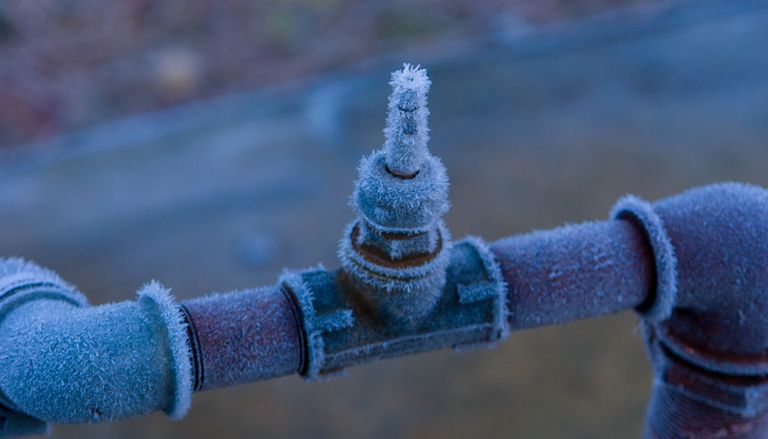Preventing Pipes from Cold Weather: Effective Strategies
Preventing Pipes from Cold Weather: Effective Strategies
Blog Article
Do you find yourself hunting for info involving Prevent Frozen Pipes ?

Winter can ruin your pipes, particularly by freezing pipes. Right here's just how to avoid it from happening and what to do if it does.
Introduction
As temperature levels decrease, the threat of frozen pipelines increases, possibly bring about costly fixings and water damage. Comprehending exactly how to avoid frozen pipes is critical for homeowners in cool environments.
Prevention Tips
Insulating prone pipelines
Wrap pipelines in insulation sleeves or use warmth tape to shield them from freezing temperatures. Concentrate on pipes in unheated or external areas of the home.
Home heating strategies
Maintain indoor rooms properly heated up, especially locations with plumbing. Open up cupboard doors to permit warm air to distribute around pipes under sinks.
Just how to determine icy pipelines
Try to find lowered water flow from taps, unusual smells or sounds from pipelines, and visible frost on exposed pipes.
Long-Term Solutions
Architectural changes
Consider rerouting pipes away from exterior walls or unheated areas. Include extra insulation to attic rooms, cellars, and crawl spaces.
Updating insulation
Buy high-quality insulation for pipelines, attic rooms, and wall surfaces. Appropriate insulation helps maintain regular temperatures and lowers the danger of icy pipelines.
Protecting Outside Plumbing
Garden hoses and exterior taps
Disconnect and drain pipes garden hose pipes prior to winter months. Set up frost-proof spigots or cover outside faucets with protected caps.
Understanding Icy Pipes
What triggers pipelines to freeze?
Pipes freeze when revealed to temperature levels below 32 ° F (0 ° C) for extended durations. As water inside the pipes freezes, it broadens, taxing the pipe walls and possibly creating them to break.
Risks and problems
Icy pipelines can lead to water system disturbances, home damages, and expensive repair work. Burst pipes can flooding homes and create substantial architectural damage.
Indications of Frozen Pipeline
Identifying icy pipes early can prevent them from breaking.
What to Do If Your Pipelines Freeze
Immediate actions to take
If you believe frozen pipelines, maintain faucets available to ease stress as the ice melts. Make use of a hairdryer or towels soaked in warm water to thaw pipes gradually.
Conclusion
Protecting against frozen pipelines needs aggressive procedures and quick responses. By comprehending the reasons, indications, and safety nets, property owners can secure their plumbing throughout winter.
5 Ways to Prevent Frozen Pipes
Drain Outdoor Faucets and Disconnect Hoses
First, close the shut-off valve that controls the flow of water in the pipe to your outdoor faucet. Then, head outside to disconnect and drain your hose and open the outdoor faucet to allow the water to completely drain out of the line. Turn off the faucet when done. Finally, head back to the shut-off valve and drain the remaining water inside the pipe into a bucket or container. Additionally, if you have a home irrigation system, you should consider hiring an expert to clear the system of water each year.
Insulate Pipes
One of the best and most cost-effective methods for preventing frozen water pipes is to wrap your pipes with insulation. This is especially important for areas in your home that aren’t exposed to heat, such as an attic. We suggest using foam sleeves, which can typically be found at your local hardware store.
Keep Heat Running at 65
Your pipes are located inside your walls, and the temperature there is much colder than the rest of the house. To prevent your pipes from freezing, The Insurance Information Institute suggests that you keep your home heated to at least 65 degrees, even when traveling. You may want to invest in smart devices that can keep an eye on the temperature in your home while you’re away.
Leave Water Dripping
Moving water — even a small trickle — can prevent ice from forming inside your pipes. When freezing temps are imminent, start a drip of water from all faucets that serve exposed pipes. Leaving a few faucets running will also help relieve pressure inside the pipes and help prevent a rupture if the water inside freezes.
Open Cupboard Doors
Warm your kitchen and bathroom pipes by opening cupboards and vanities. You should also leave your interior doors ajar to help warm air circulate evenly throughout your home.

We hope you liked our article on Preventing and dealing with frozen pipes. Thanks for finding the time to browse our piece of content. Sharing is good. One never knows, you will be helping someone out. Thanks so much for your time invested reading it.
Call Today Report this page